Art History
Oops! 10 Times Famous Paintings Were Mistakenly Hung Upside Down
In some cases the errors went unnoticed for decades.
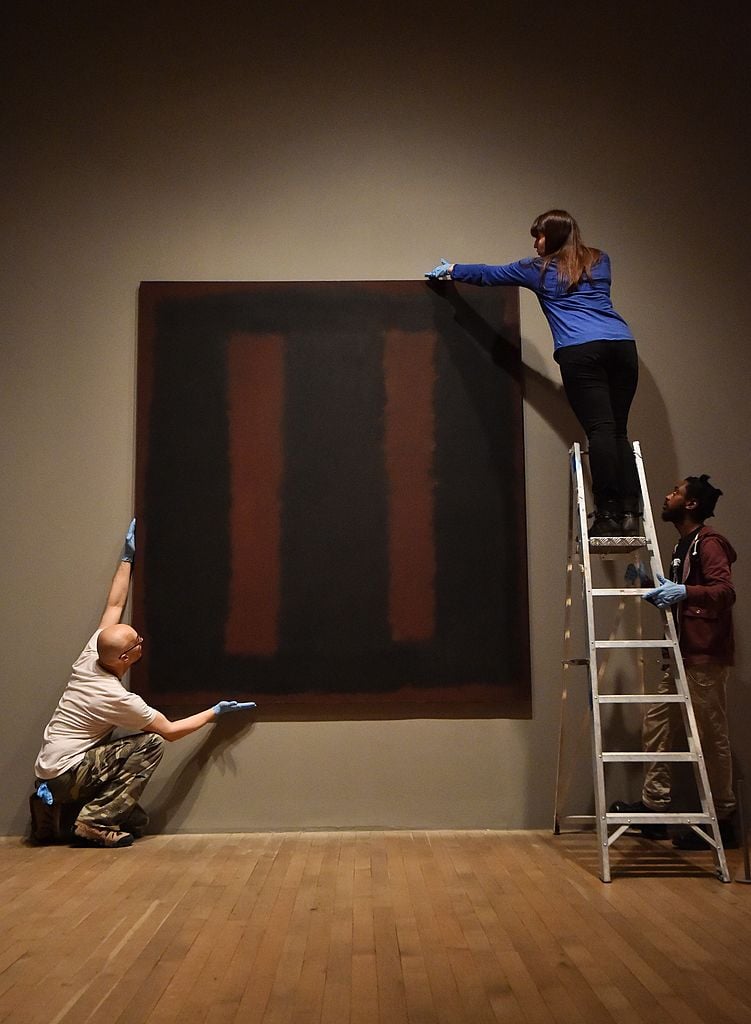
In some cases the errors went unnoticed for decades.

Jo Lawson-Tancred

Last month, the Hilma af Klint Foundation had to admit that one of the artist’s abstract canvases may have been hanging upside down for decades. The experts were clued in by an eagle-eyed fan, who noticed something off about the artwork while visiting the recent “Hilma af Klint & Piet Mondrian” exhibition at Tate Modern in London. Comparing The Swan no.14 to other works in the “Black Swan” series, she noted that its triangle was unusually inverted, as was its color scheme. This changed the whole meaning of the work since these elements were used by af Klint to denote specific spiritual energies.
The woman’s suspicions were confirmed when she referred to af Klint’s sketchbooks, The Blue Books, which are filled with miniature versions of her designs that are used by experts to verify the artist’s original intentions. The painting was mounted nearly 40 years ago, meaning it may have been hanging upside down for decades. Next spring, after it returns to Sweden following the exhibition’s tour to the Netherlands, the work will be assessed and a decision will be made about whether it needs to be remounted.
Incidentally, another celebrated early 20th-century abstractionist once credited the fortuitous moment he saw his own painting upside down with the revelation that good art doesn’t need to be descriptive. As legend has it, Wassily Kandinsky chanced upon the work in his Munich studio and decided that this transfixing but nonsensical configuration was one “of extraordinary beauty, glowing with inner radiance.” It certainly beat the original.
Hanging a painting the wrong way round is, at least in some cases, an easy mistake to make, but does it happen often? We take a look at some famous examples from history.
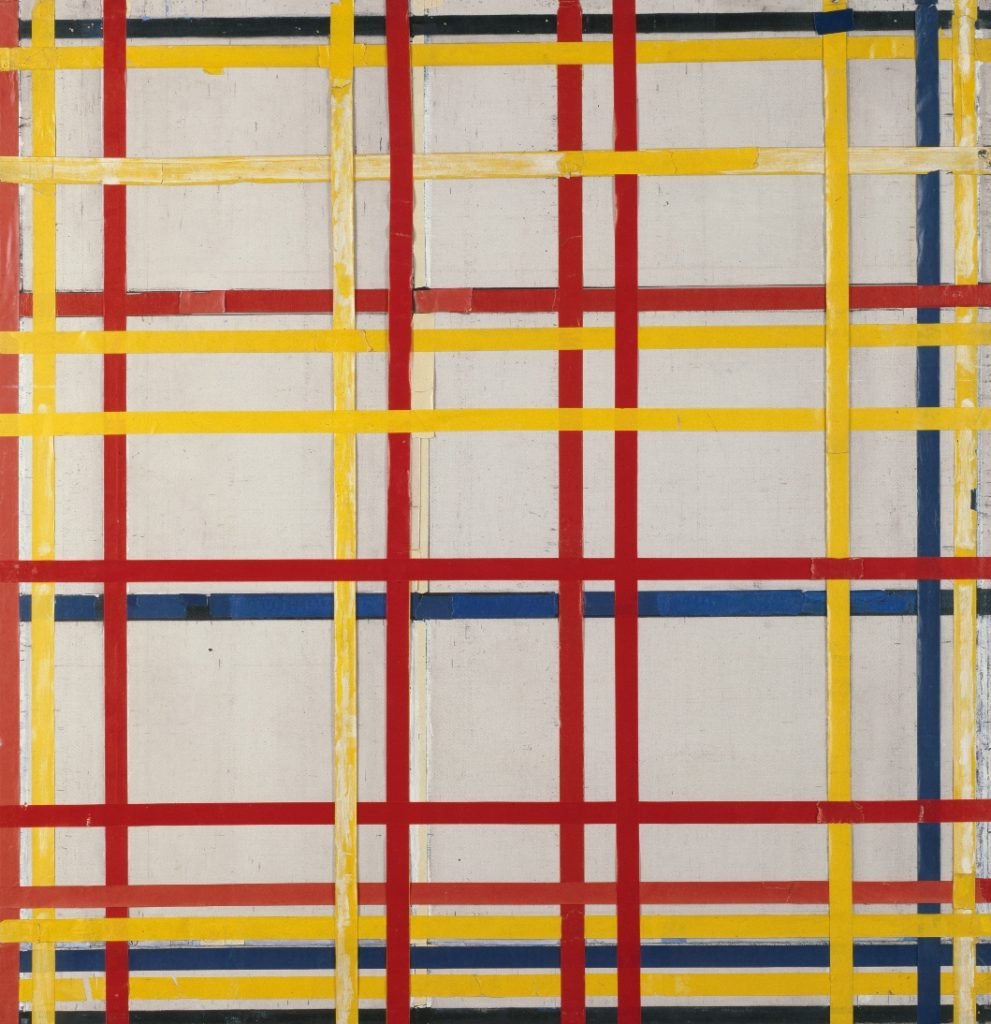
Piet Mondrian, New York City 1 (1941). Photo by Walter Klein, Düsseldorf, courtesy of © Mondrian/Holtzman Trust, c/o Beeldrecht, Amsterdam, Holland Kunstsammlung Nordrhein Westfalen, Düsseldorf.
When was the mistake discovered? 2022
Where is the work? Kunstsammlung Nordrhein-Westfalen K20 in Düsseldorf, Germany
How was the mistake discovered? How to orientate a grid of yellow, blue, black, and red stripes? In 1945, one year after Mondrian’s death, New York City 1 (1941) was installed at MoMA and it seems that the curators might have just had to guess. More than 75 years later, their mistake was spotted by German curator Susanne Meyer-Büser, who works at the museum in Düsseldorf that acquired the work in 1980. She compared the painting to an archival photograph from 1944 showing it propped up the other way on an easel in Mondrian’s studio. To avoiding damaging the work, it will continue to be displayed the same way that it has since 1945.

Henri Matisse, Le Bateau (1953). Courtesy of the Museum of Modern Art.
When was the mistake discovered? 1961
Where is the work? Museum of Modern Art in New York City
How was the mistake discovered? When the paper cut-out was featured in a new MoMA exhibition “The Last Works of Matisse: Large Cut Gouaches,” nobody immediately noticed anything amiss about this abstracted, highly minimal rendering of a sailboat and its reflection, which uses just a few outlines and shapes. However, 47 days later an unusually attentive Wall Street stockbroker called Genevieve Habert became convinced on her third visit that the work must have been flipped. “You don’t know what’s up and you don’t know what’s down and neither do we,” a guard apparently told her. The show’s catalog backed her suspicions, however, and she took the story to the New York Times. By the time MoMA’s director of exhibitions agreed to take action the exhibition had already closed.
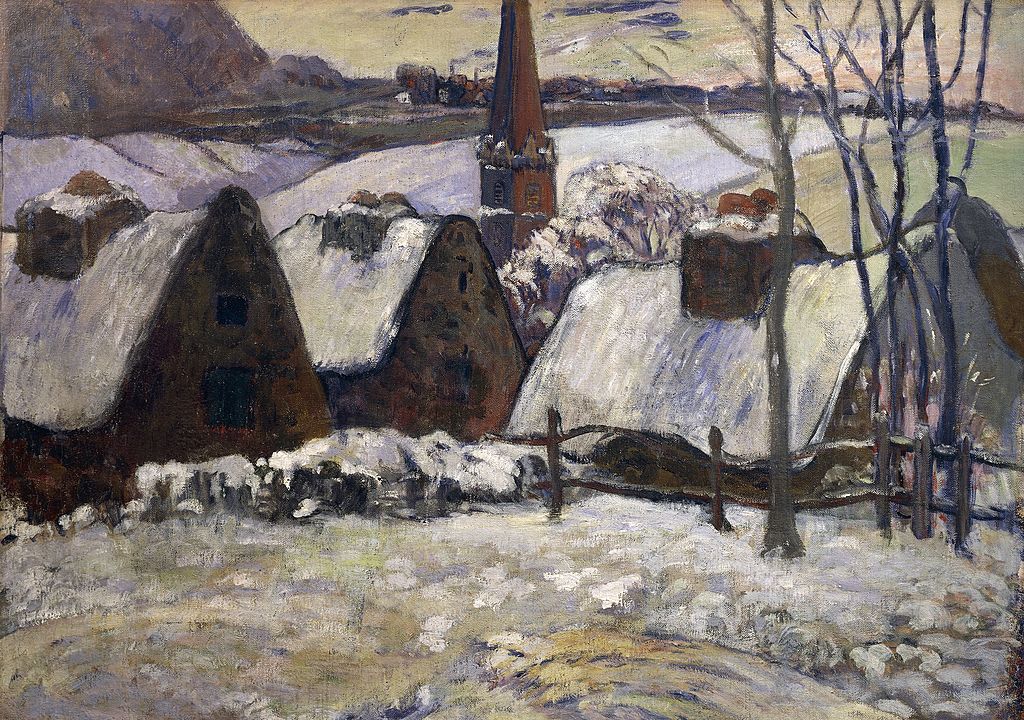
Paul Gauguin, Breton village in the snow (1894). Photo by DeAgostini/Getty Images.
When was the mistake discovered? 1903
Where is the work? Musée d’Orsay in Paris
How was the mistake discovered? The French writer and ethnographer Victor Segalen was a follower of Paul Gauguin. He traveled to Tahiti to meet the artist but arrived shortly after his death in 1903. An auction was held on the island to sell off Gauguin’s belongings and included among the lots was a strange painting that had, almost unbelievably, been named Niagara Falls. By his own account, Segalen scooped up the work for a scant amount and immediately turned it around, at which point the composition suddenly made sense as the French village of Breton blanketed in snow.
When was the mistake discovered? 1986
Where is the work? Weisman Art Museum, University of Minnesota in Minneapolis
How was the mistake discovered? This sensual flower study, highly typical of the artist’s oeuvre, is the most valuable at the Weisman Art Museum, but this didn’t prevent them accidentally hanging it vertically for nearly thirty years. Then-director Lyndel King found an old newspaper clipping from 1937 in which the painting was clearly horizontal and confirmed the surprising discovery by referencing the painting’s accession record. Although her works are not abstract, a similar confusion arose over The Lawrence Tree at Wadsworth Atheneum in Connecticut, the correct orientation of which even confounded O’Keeffe. “She said she looked at the tree from several directions and several ways, and she felt that the painting could be hung from any direction,” the museum’s curator of American painting told the LA Times in 1989.
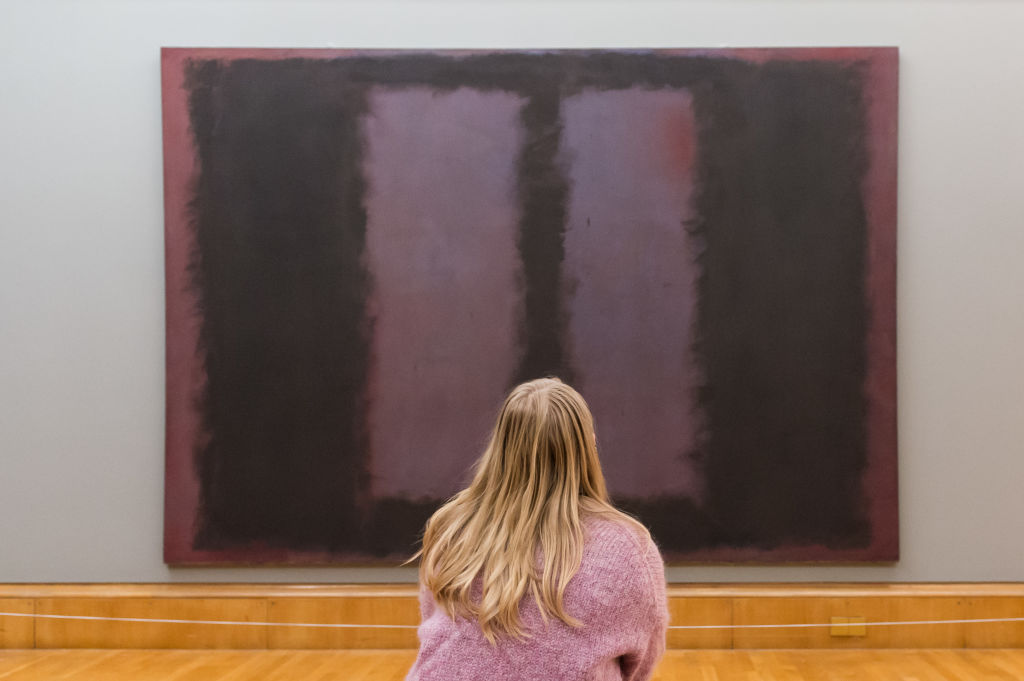
Mark Rothko, The Seagram Murals: Black on Maroon (1958). Photo: Wiktor Szymanowicz/Future Publishing via Getty Images.
When was the mistake discovered? 1979/1987(?)
Where is the work? Tate Britain in London
How was the mistake discovered? The matter of how to hang a pair of paintings by Rothko known as Black on Maroon has been a back and forth, and there is no known record of the artist’s original intention. Produced for The Four Seasons Restaurant in the Seagram Building, in the end they were gifted to Tate by the artist. When they arrived in 1970, they were hung with the central maroon stripes running horizontal, to reflect how Rothko had signed the back of the canvas. This was switched to a vertical hang in 1979 before going back to their earlier orientation in 1987. Eventually, they turned vertical once more and this is how they have remained since.
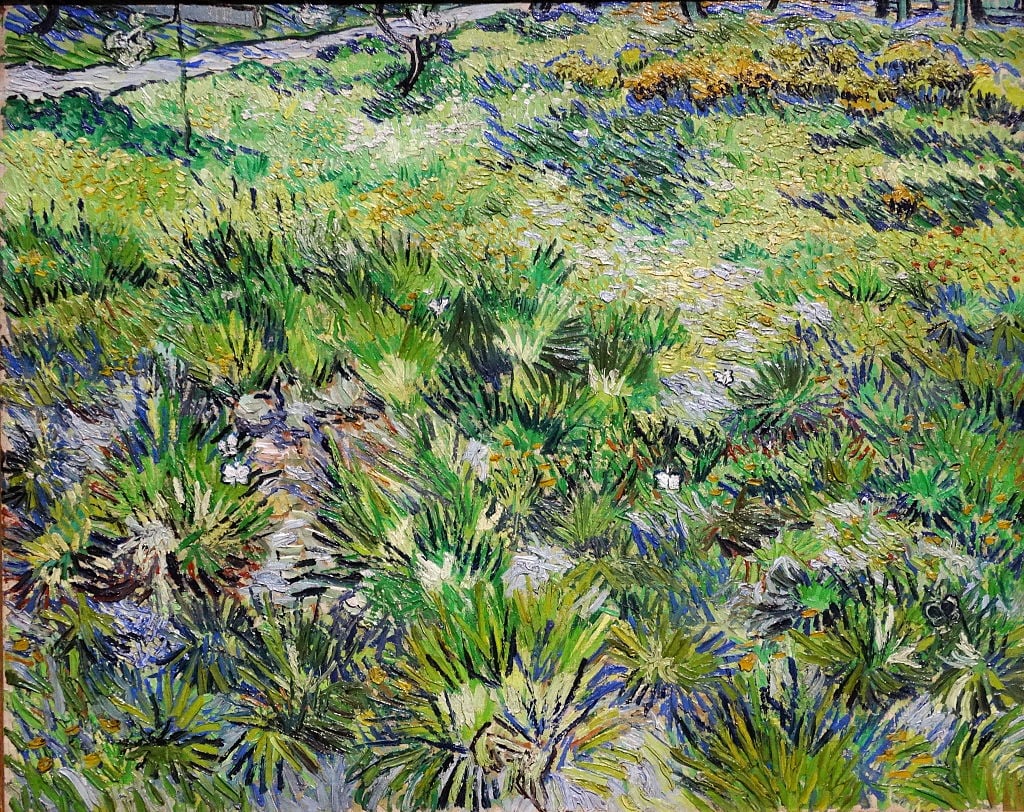
Vincent Van Gogh, Long Grass with Butterflies (1890). Photo: Universal History Archive/Universal Images Group via Getty Images.
When was the mistake discovered? 1965
Where is the work? National Gallery in London
How was the mistake discovered? It is not always art experts that are able to sense something about an artwork isn’t quite right. In the case of one painting of long grass made by Van Gogh during his stay at an asylum in 1890, it was a 15-year-old schoolgirl who first raised the alarm and was apparently made to prove her point by showing the attendants a postcard. It turned out that the work had been accidentally hung upside down after it was removed to be photographed, but thanks to the teenager’s keen eye this inversion didn’t last long—just fifteen minutes, in fact!
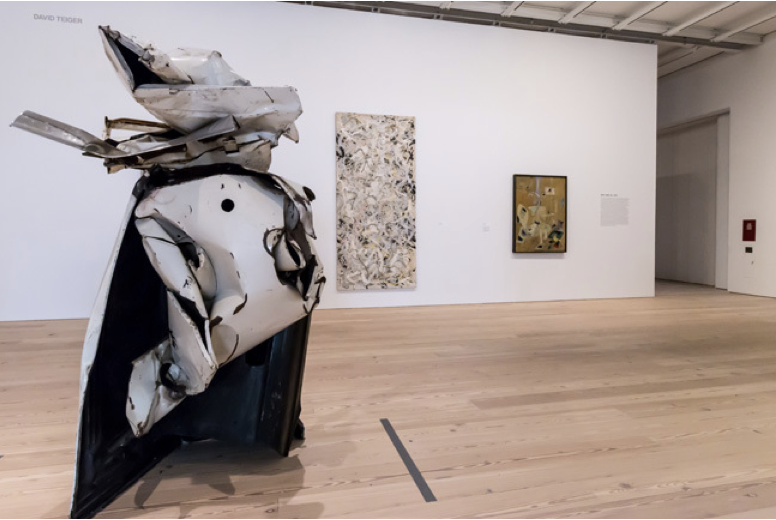
Jackson Pollock’s painting Number 27, 1950, at center, along with a John Chamberlain sculpture, left, and an Arshile Gorky painting, right.
When was the mistake discovered? 2015
Where is the work? Whitney Museum of American Art in New York
How was the mistake discovered? Though not technically a mistake, the decision made by curators to hang this Pollock painting vertically instead of with the conventional horizontal orientation recorded in his catalogue raisonée is a reference to the artist’s own experimentation at a 1950 exhibition at Betty Parsons Gallery. “Space was perhaps a factor, but if Pollock had objected to it being hung vertically, it wouldn’t have happened,” the Whitney’s curator Dana Miller said in 2015. Crucially, he flipped the painting after it was signed, suggesting that he never made a final call on how the work should be displayed. “Had the signature not been on the painting in the Betty Parsons show, I don’t think we would have done what we did,” Miller added. In 2021, the University of Iowa’s Stanley Museum of Art admitted that it had accidentally displayed its mural by Jackson Pollock upside down for 52 years. “We regret the error and have resolved the issue,” it promised in a statement on social media.
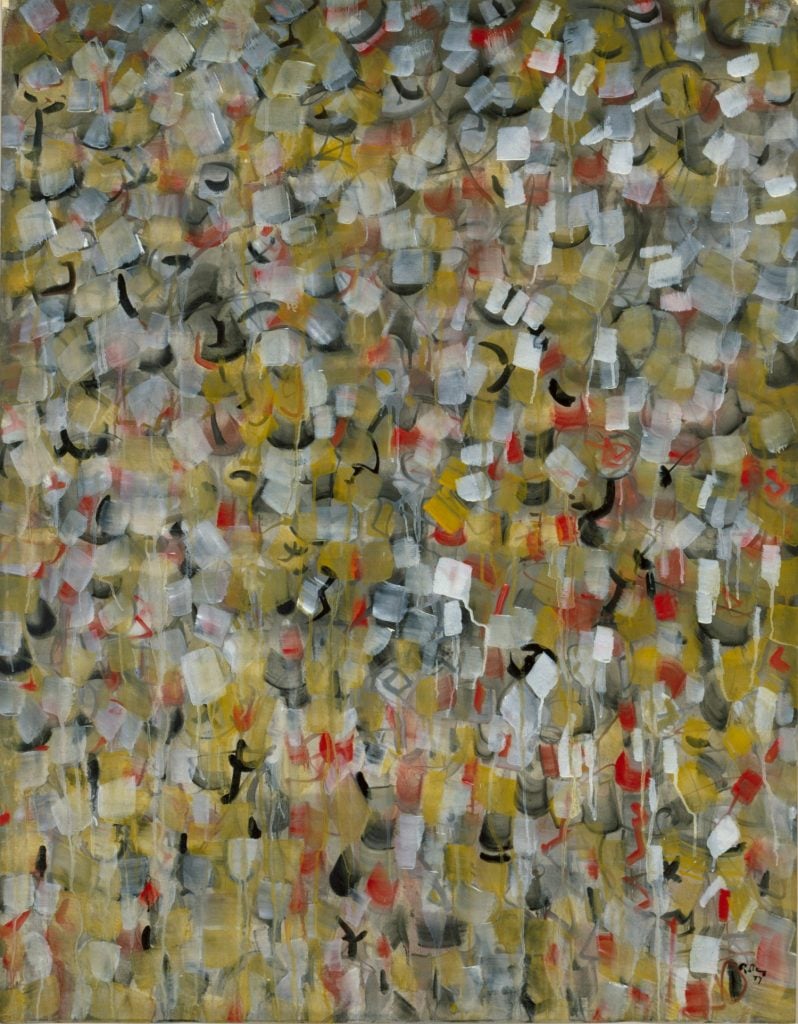
Mark Tobey, Autumn Field (1957). Photo Smithsonian American Art Museum.
When was the mistake discovered? 1968
Where is the work? Smithsonian American Art Museum
How was the mistake discovered? The correct positioning of this painting apparently became the subject of some debate when it was loaned to the White House in the late 1960s. According to the New York Times, it was hung just outside President Johnson’s office but some elements didn’t quite make sense. For one, it appeared as though the pigment had run uphill, and also that the artist must have signed and dated the artwork at the top. Further inquiry established that the work had also recently been exhibited upside down at a museum in Tokyo, but the White House carpenter was able to spin it the right way up.
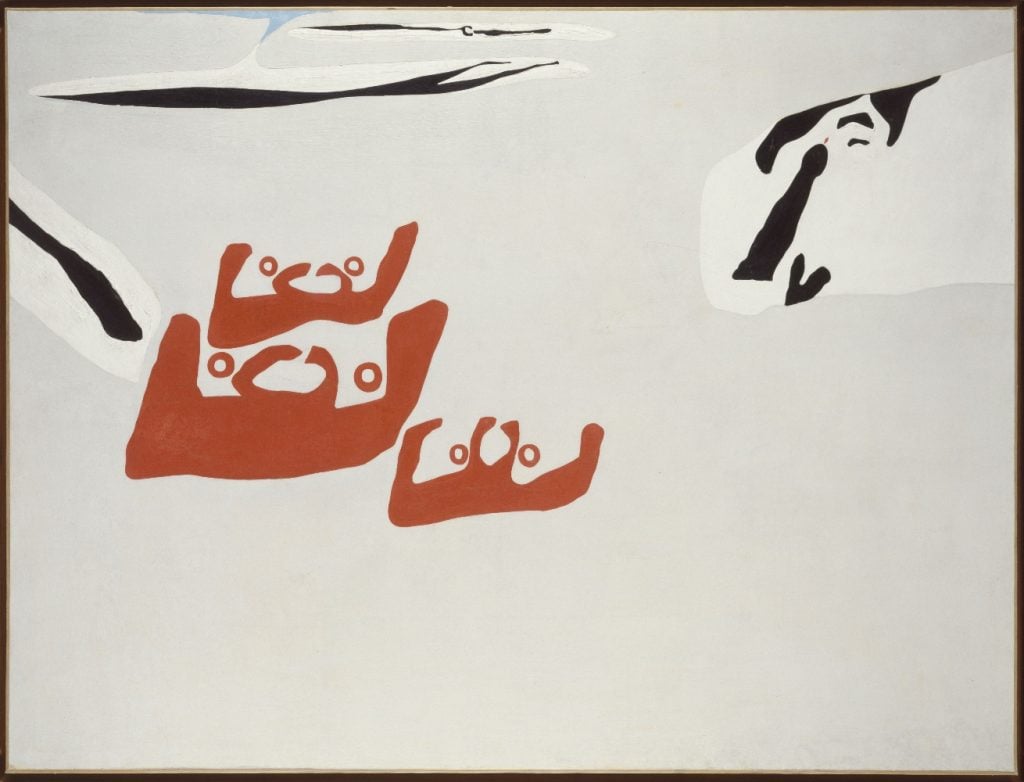
Salvador Dalí, Cuatro mujeres de pescadores en Cadaqués (Four Fishermen’s Wives in Cadaqués) (c.1928). Photo courtesy of Museo Nacional Centro de Arte Reina Sofía.
When was the mistake discovered? 1994
Where is the work? Reina Sofia in Madrid
How was the mistake discovered? When the work travelled to London’s Hayward Gallery for a retrospective of the Surrealist artist in 1994, its accidental placement upside down didn’t attract any notice. That is, until Martin Bailey from The Art Newspaper decided that the infamous absurdist probably wouldn’t have made the phallic motif in one corner point downwards instead of up. When he raised the matter with the show’s curator Ana Beristain, she apparently claimed that “visitors to Dali’s house said they had seen it the way it is hanging in London.” The expertise of Antoni Pitxot, director of the Dali Theatre-Museum, settled the matter in favor of Bailey’s instinct.
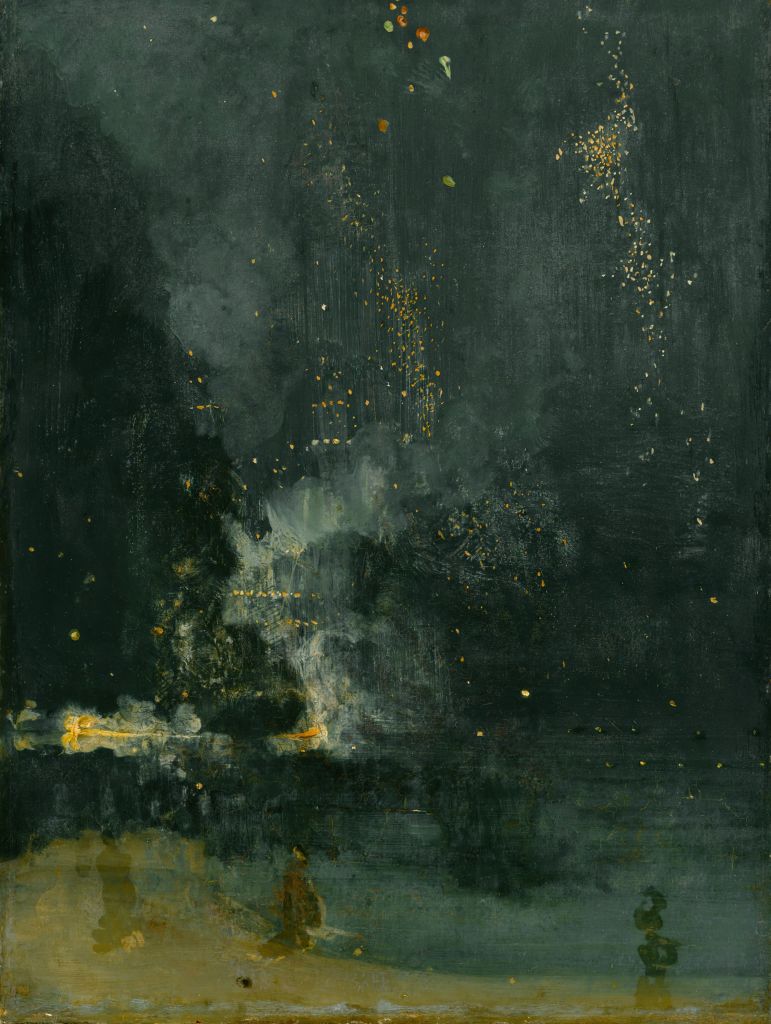
James Abbott McNeill Whistler, Nocturne in Black and Gold—The Falling Rocket (1875). Photo: Sepia Times/Universal Images Group via Getty Images
When was the mistake discovered? 1878
Where is the work? Detroit Institute of Arts
How was the mistake discovered? When the art critic John Ruskin saw this smokey nocturne offering a beautifully ambiguous impression of a firework display at London’s Cremorne Gardens, he accused Whistler of “flinging a pot of paint in the public’s face.” Enraged, the artist sued Ruskin for libel, claiming in court that the work must be understood as an artistic “arrangement of line, form and color.” From a Victorian perspective, Whistler’s argument was not aided by the fact that the work was accidentally carried into the courtroom upside down, to the great amusement of his adversaries. Though he won the case, Whistler received only a farthing and was forced to declare bankruptcy.
More Trending Stories:
Conservators Find a ‘Monstrous Figure’ Hidden in an 18th-Century Joshua Reynolds Painting
A First-Class Dinner Menu Salvaged From the Titanic Makes Waves at Auction
The Louvre Seeks Donations to Stop an American Museum From Acquiring a French Masterpiece
Meet the Woman Behind ‘Weird Medieval Guys,’ the Internet Hit Mining Odd Art From the Middle Ages
A Golden Rothko Shines at Christie’s as Passion for Abstract Expressionism Endures
Agnes Martin Is the Quiet Star of the New York Sales. Here’s Why $18.7 Million Is Still a Bargain
Mega Collector Joseph Lau Shoots Down Rumors That His Wife Lost Him Billions in Bad Investments